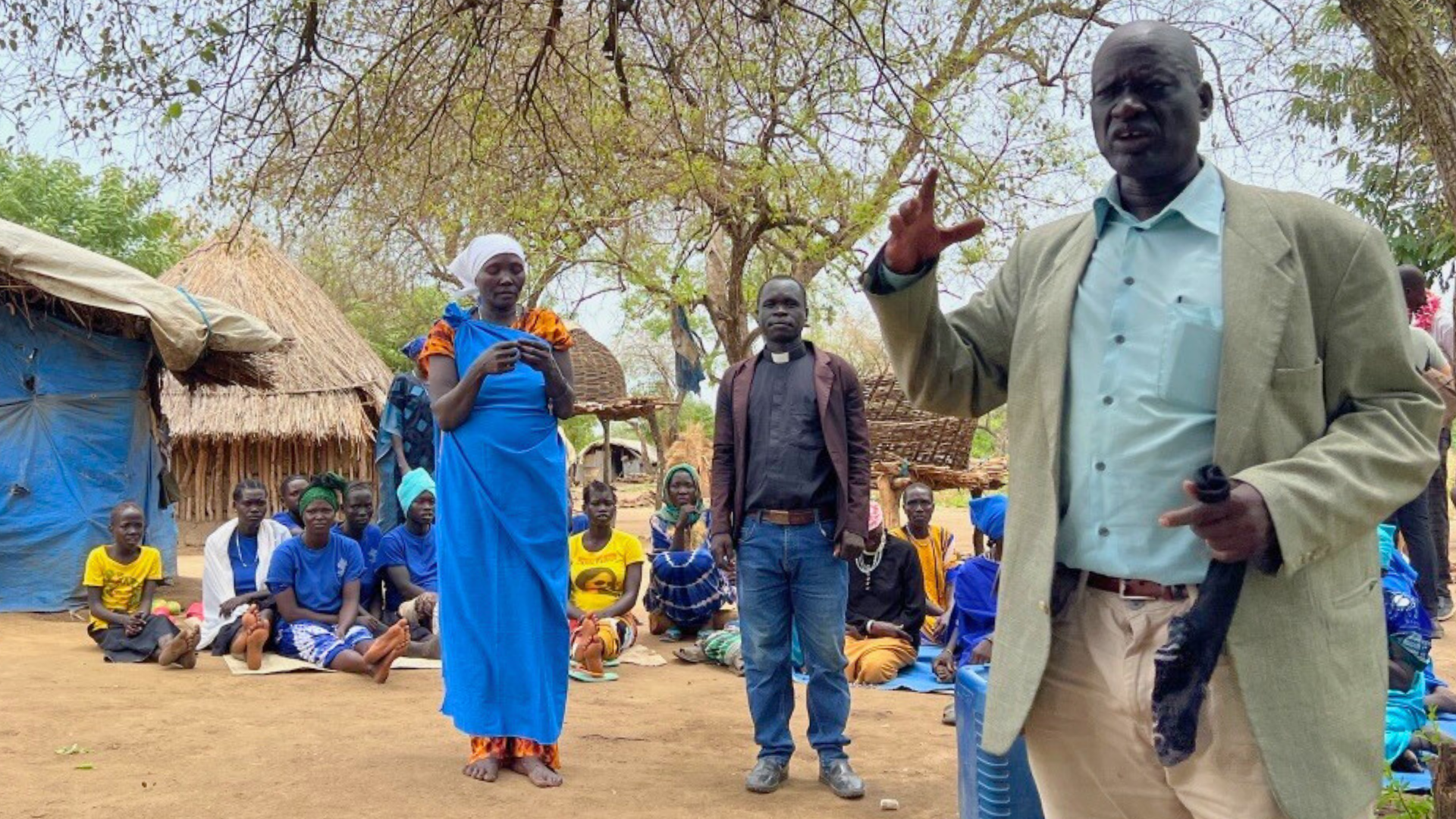Reclaiming the Church’s Role as a Place of Healing
When my family and I migrated from Haiti, we were desperately in need. We were in a state of shock and did not know where to turn. My sisters and I were lonely and isolated. My parents were fearful of our new community and surroundings. In the Haitian community, we have a running joke that says the only places our parents would allow us to go are “lekol, lakay, legliz,” meaning, “school, home, and church.” In the midst of our trauma, the immigrant church became a source of healing for all of us.
Historically, the church has been a cornerstone of support for individuals and communities, offering comfort in the most challenging moments. It provides a space where people can seek understanding and feel a sense of security, reminding them that things will eventually be all right. The church stands as a beacon of hope, love, grace, and compassion. At its best, the church is a place that lives out its calling to bring about good news to those in need in the community. Leaders of the church should remind the community that there’s life when all they see is death all around them, emotional and physical. The posture of the church should calm the fears and anxiety the world often produces.
However, despite this vital role, at times the church struggles to fulfill its mission. At times the church seems deaf to the pain of the world. The church often seems to be losing its significance in the community because it has aligned itself with the wisdom of the world, not with the foolishness of God as Paul states in 1 Corinthians 1:25: “For the foolishness of God is wiser than human wisdom.”
One of the most significant issues that arises in the church is when the leaders themselves are not in a healthy state emotionally and spiritually. When leaders lose their way, we can forget that Jesus is calling us to operate from a different system with a different structure with a different set of rules. This can hinder our ability to support those in need effectively. To truly embody the mission of the church and provide the healing and guidance our communities seek, church leaders must cultivate emotional well-being, social awareness, and trauma-informed approaches. Here are three essential steps leaders need to take to rise to this challenge:
Leaders must be healthy, spiritually, and emotionally grounded
The first and most crucial step is for leaders to seek to be emotionally healthy and stable. Leaders must recognize their own humanity and the importance of self-care. We all have limited capacities, and leaders need to be aware of their own limits and attend to their own emotional, physical, and spiritual needs. A leader who is emotionally unhealthy is often dysregulated without proper tools to manage their emotions. Such people are not only unavailable to themselves, but they cannot provide support, comfort, or guidance to others in need. A leader’s well-being is critical because their ability to respond meaningfully to trauma depends on their emotional steadiness.
Leaders must know the pain points in society
Leaders cannot effectively address pain and suffering in their churches if they are unaware of the struggles within their community. Far too often, faith leaders live insulated from the realities faced by their congregation, whether they’ve arrived at a level of prominence living in separate communities from those they serve, or they are simply disconnected from the lived experiences of the people they serve. It is vital that leaders familiarize themselves with societal pain points, whether those be around immigration, the prison system, racial injustice, or the challenges facing families, such as abuse or the loss of children.
As I was growing up in our immigrant community, our church leaders were keenly aware of the needs of the new transports in their community. Food shortage, inadequate jobs, employers taking advantage of immigrant employees, loneliness, and cultural challenges were just a few of the struggles we faced. Our church created a place of safety where we could find belonging, friendship, and tangible resources to survive.
Leaders need to be present and aware of the deep-rooted struggles in their communities. Only by being aware of these challenges can they provide meaningful support to those who are suffering. Knowing the pain points of the community allows leaders to speak and act with empathy and understanding.
Leaders must be trauma-informed
I once asked a group what it means for a leader to be trauma-informed. These were a few of their responses:
“They can actually see/anticipate the real-life problems their people are facing so that sermon examples aren’t just generalities, but are things that actually impact the deepest parts of their congregation.”
“They lead with compassion that expresses itself through tenderness and gentleness—and encourage others to do so as well.”
“Their view on therapy/counseling is a big clue.
If they oppose it, you’ll have some problems. If they promote it, they are doing their personal work and probably carry an awareness about trauma and possess an empathy for others.”
“They talk about trauma and its impact on the soul in their teachings.”
“Mental health and trauma are discussed openly.”
It’s no longer enough for leaders to simply offer sympathetic words of comfort; they must be aware of how trauma impacts their community. And they must be ready to speak of it openly. Trauma leaves deep emotional and psychological scars, and without understanding its complexity, leaders may inadvertently do more harm than good. Leaders must learn to recognize the signs of trauma, understand trauma responses, and know how to support those who are hurting.
It’s unrealistic to expect leaders to have a degree in trauma in order to be a trauma-informed leader. However, leaders must be able to connect with the pain and suffering in their communities well. Being trauma-informed means recognizing the impact pain can have on our relationships with one another, with God, and with the earth. It also requires understanding that the journey of healing isn’t just about eloquent sermons and prayers—it’s about life-on-life relationships.
Trauma-informed leaders don’t just support individuals—they cultivate environments where healing is fostered. They recognize the need for everyone in the community to help create and support healing communities. They invite counselors, coaches, spiritual directors, and human resources specialists to edit resumes and do mock interviews. They invite CEOs to offer opportunities, community leaders to challenge systems of oppression and more.
Trauma-informed leaders know the job of creating healing communities requires a dependence on the Holy Spirit as well as on those in the community for support. Communities need spaces that foster connection, trust, and emotional safety. When leaders prioritize being trauma-informed, they can help create such environments where people can come together to heal from their pain collectively.
In times of crisis, communities look to their leaders for guidance, healing, and hope. By prioritizing emotional well-being, being aware of societal pain points, and embracing trauma-informed approaches, faith leaders can rise to the challenges their communities face. The church has the potential to be a transformative space where individuals find not only spiritual solace but also the practical and emotional support they need. By leading with compassion, wisdom, and an openness to the Holy Spirit’s guidance, church leaders can truly embody the good news and create environments where healing, trust, and connection flourish.














